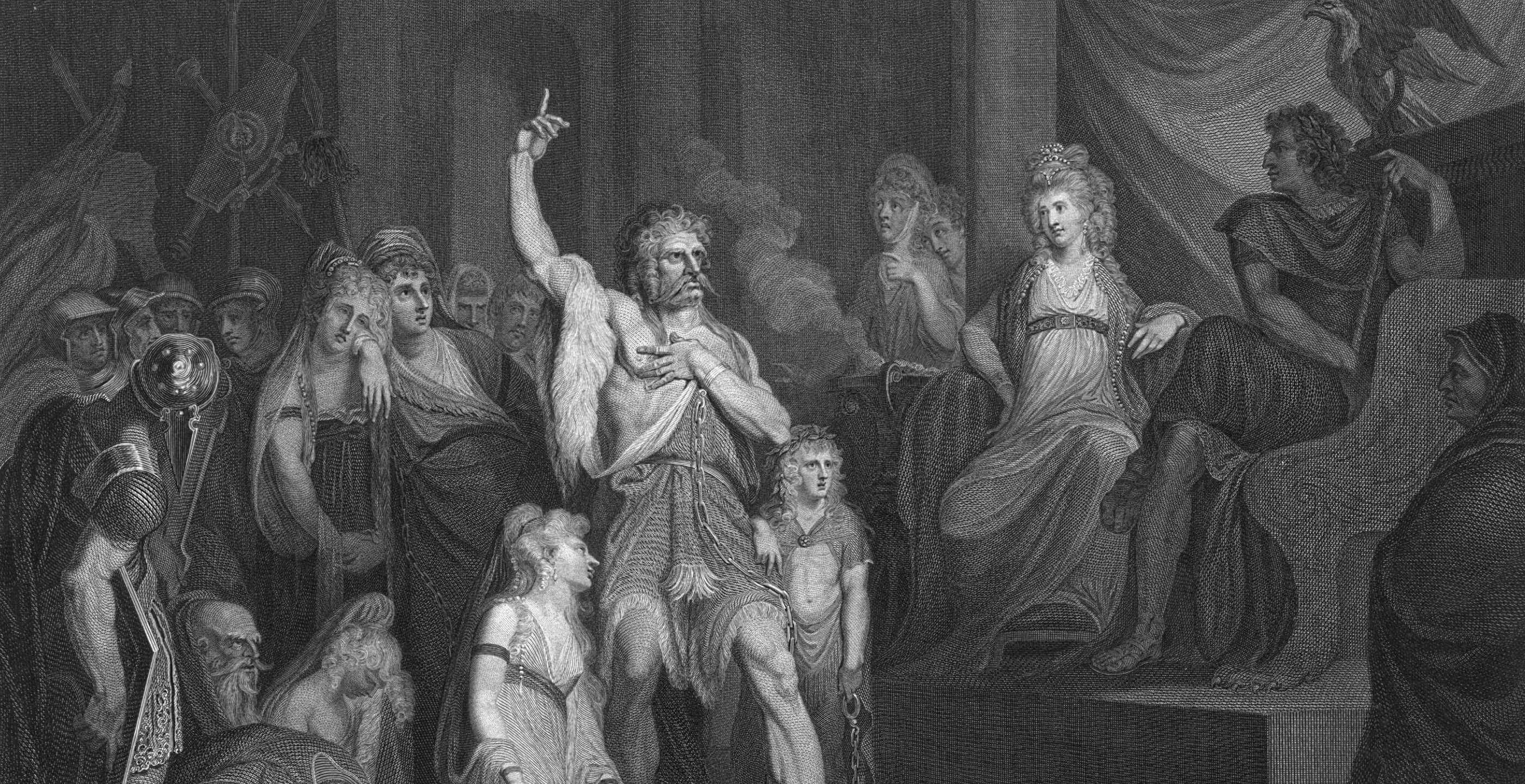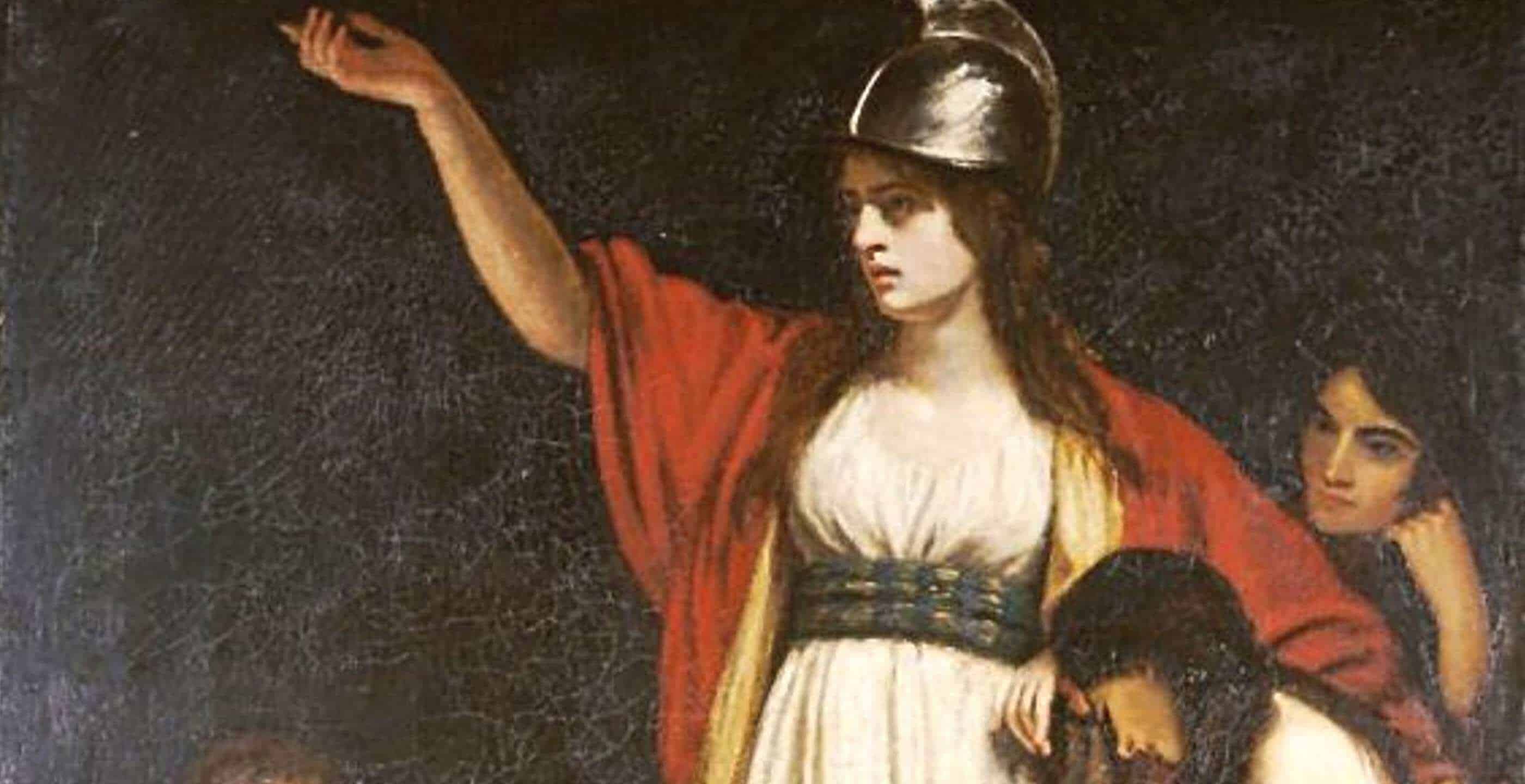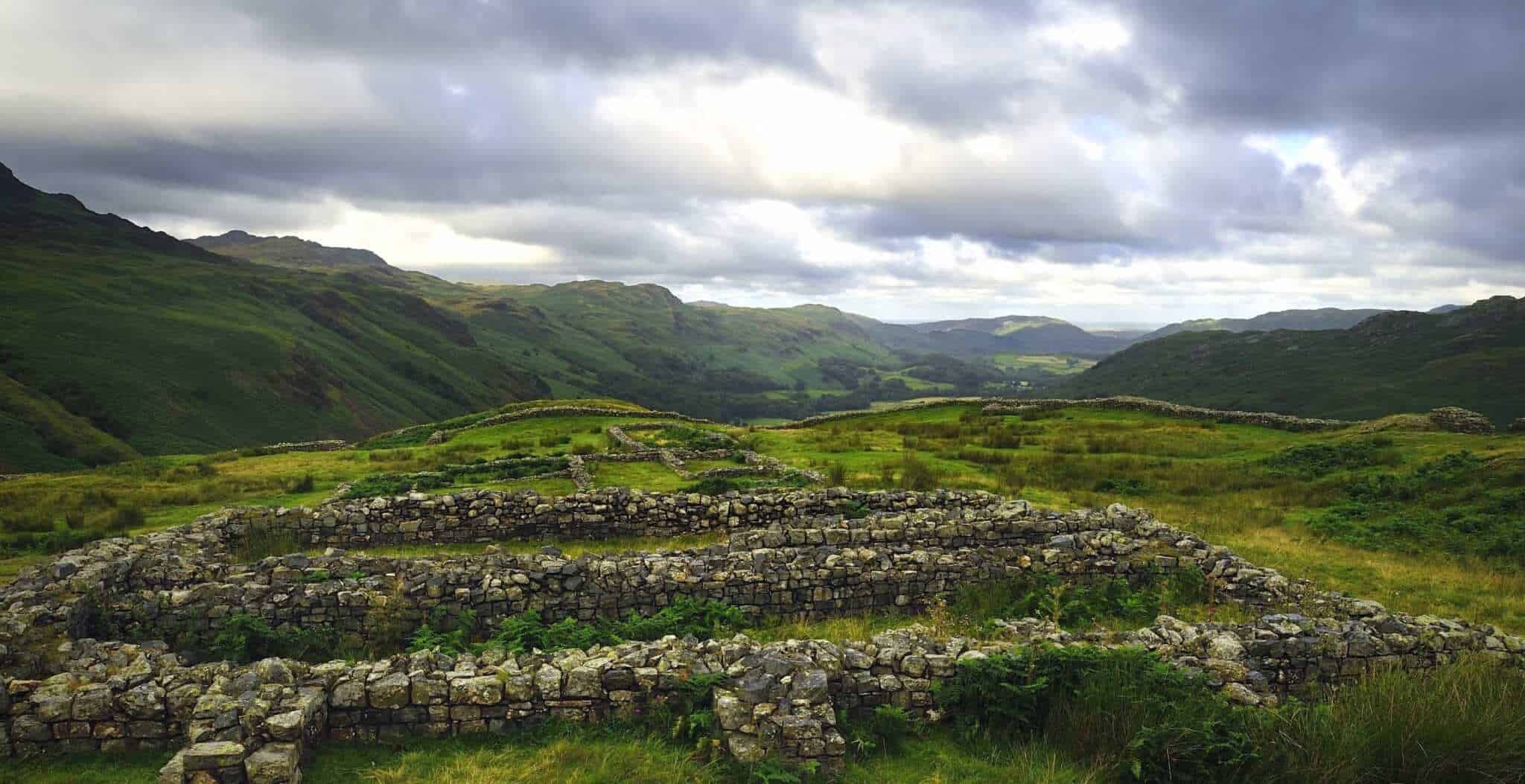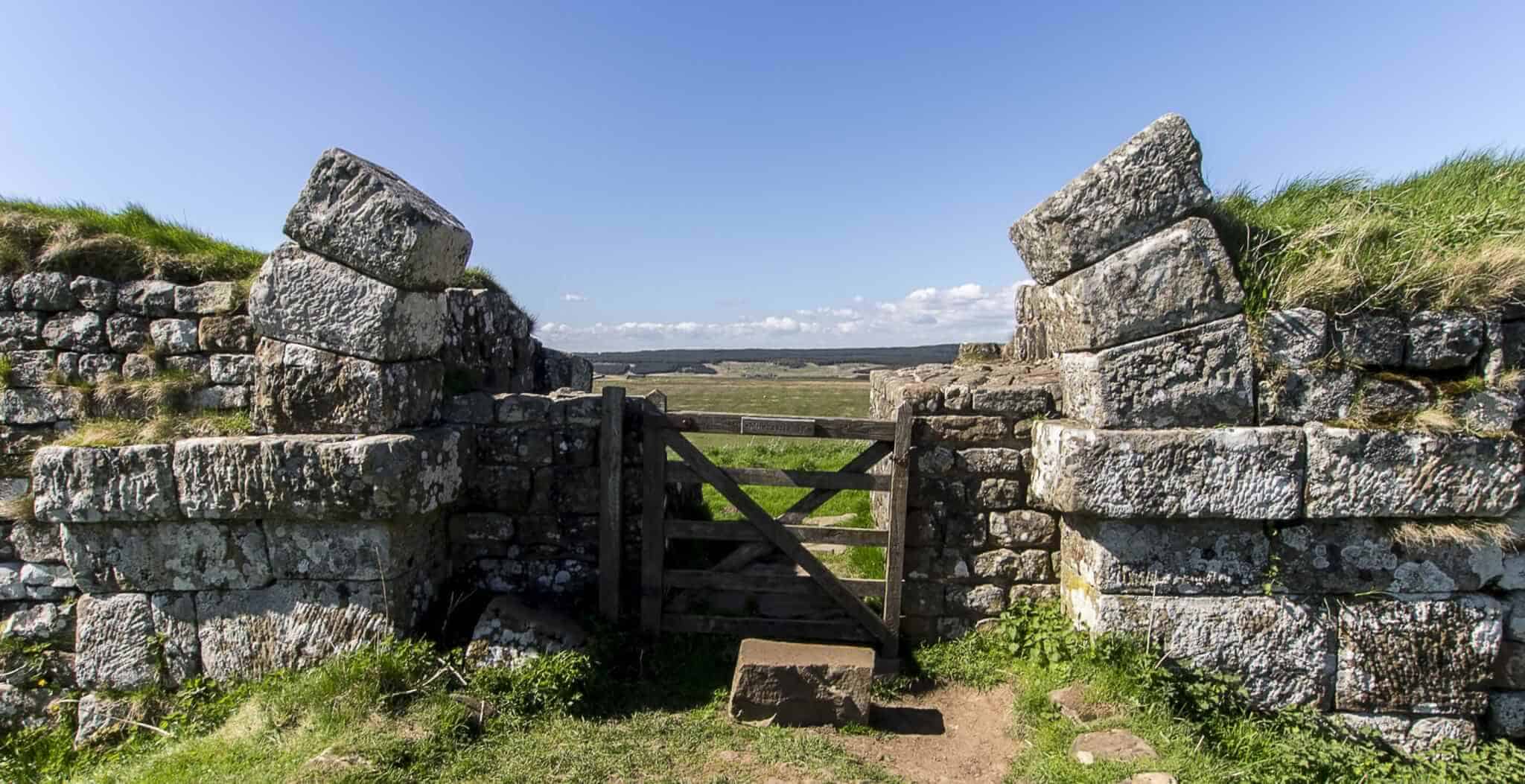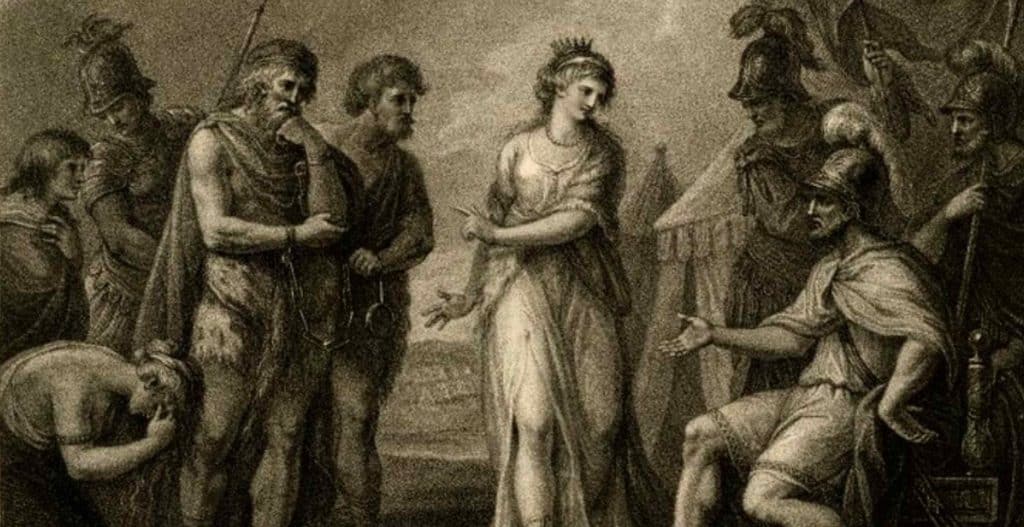Caratacus (Caractarus) was a British chieftain who fought against Roman expansion in Britain, only to be betrayed by Queen Cartimandua, then taken captive by the Romans, transported as prisoner to Rome, then finally freed by Emperor Claudius to live the rest of his life in exile. He was a first century AD King who lived an eventful life in Ancient Britain, defending his tribe, his territory and his people against one of the strongest empires ever to exist, the Romans.

Caratacus was the son of one of the great British kings in ancient times called Cunobelinus, leader of the Catuvellauni tribe. This tribe occupied the Hertfordshire area north of the River Thames and would later expand north and to the west. The Catuvellauni were said to have created a prosperous economy and practised agriculture in their territory. King Cunobelinus after his death left his Catuvellaunian kingdom to be divided between Caratacus and his brother Togodumnus. The brothers would find themselves leading the opposition forces against the Roman invasion in 43AD, a duty which Caratacus would find himself bound to for the rest of his life.
The campaign launched by the two brothers against the invaders lasted for a period of almost nine years. The Catuvellauni were known to be an aggressive and forceful tribe capable of defending their expanding territories against the Romans. Under Caratacus and Togodumnus the fight began in 43AD, leading the resistance in the south east of England against the Roman invaders led by Aulus Plautius.
The Battle of Medway involved two initial skirmishes in east Kent, which forced the native tribes to move further west on the banks of the river to meet the invaders. The Romans meanwhile had secured the surrender of the Dobunni tribe which were based in the west of Britain; this was a tactically significant manoeuvre by the Romans as the Dobunni were subjects of the Catuvellauni tribe. Diplomatically this was a win for the Romans and a blow for morale for Caratacus and his men who were also logistically weakened with fewer men to fight for the resistance.
At the battle at Medway, described by Cassius Dio who becomes the main source for this period, there was no bridge allowing the troops to cross the river, and so the Roman auxiliaries swam across. The attack launched by the Romans under the command of Titus Flavius Sabinus took the natives completely by surprise, ultimately forcing the British tribes back to the Thames whilst the Roman battle groups could press ahead through the newly gained territory. The battle proved to be long, unusual for the historical period and it seems likely that many natives from the various British tribes lost their lives. Those that did survive made their way back to the Thames which offered a better strategic position for Caratacus and his men.
The British who were now based at the Thames had been relentlessly pursued by the Roman forces across the river, leading to some losses on the Roman side in the marshland of Essex. Some of the troops sought to swim across in pursuit of the enemy whilst others may have even built a temporary bridge or crossing in order to keep up the chase. At the battle on the Thames, Caratacus’s brother Togodumnus sadly lost his life, whilst his brother managed to escape to Wales where he could regroup and launch a counter-attack.
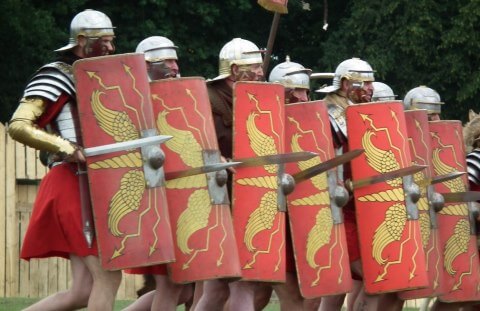
Unfortunately for Caratacus, the Romans initial foray into Britain in the summer of 43AD proved to be very successful, leading to massive gains in the southeast and the defeat of native tribes in two significant battles. Furthermore, many of the tribes fighting under Caratacus gave themselves up to the Romans realising that if they did not make peace, they too might meet a grim fate against the invaders.
Desperate to maintain resistance, Caratacus fled westwards, heading for Wales where he would go on to lead the Silures and Ordovices against Publius Scapula. In his new base in southern Wales he was able to organise his remaining loyal tribes successfully, engaging in guerrilla warfare against the pressing Roman forces.
Unfortunately for the Caratacus, his tribal numbers were incredibly weakened by previous conflict and although his men were able to hold their own against the Romans in a battle at Silures, which is now modern-day Glamorgan, he was forced to move northwards to an area called Ordovices, now central Gwynedd, to find a suitable area for battle. For Caratacus this ensuing battle needed to be a decisive one and it would be – but for the Romans.
The battle of Caer Caradoc in 50AD would end up being Caratacus’s final battle, his swan song against Roman invasion, whilst for the invaders it would mean securing the south of Britannia. The battle itself took place in a well-chosen location in the hilly countryside, decided by Caratacus as a good area as it allowed the tribes to be on higher ground. The warriors serving under him were made up of the Ordovices and some Silures. The location had all the signs of securing a British victory. The approach and retreat were difficult, there were ramparts in place with armed men defending them and there was the natural barrier of the river to stop the Romans.
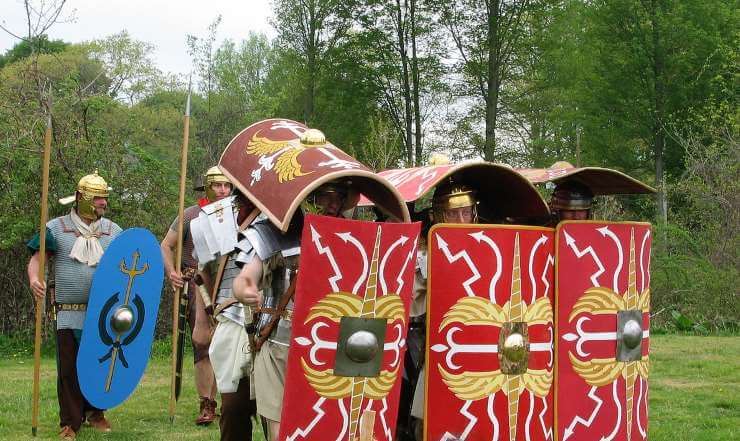
The way in which the battle played out did not go according to Caratacus’s plan. Under the command of Publius Ostorius Scapula, the Roman troops navigated the river easily. When they had crossed and got on to dry land they were met with missiles which forced them into the defensive testudo formation, also known as the tortoise, using their shields to form a wall barrier against any incoming missiles. This allowed them to overcome the first British attack plan; they then easily dismantled the ramparts and breached Caratacus’s defences.
Once the battle commenced, the fighting turned bloody very quickly, forcing the native troops to the hilltops with the Romans not far behind. With the fear and constant threat of the Romans in pursuit, the British tribal lines were broken, allowing the invaders to catch them easily between the auxiliaries and the more heavily armoured legionaries. Whilst the British fought bravely they were overcome by the Romans once more and victory fell in the lap of the invaders.
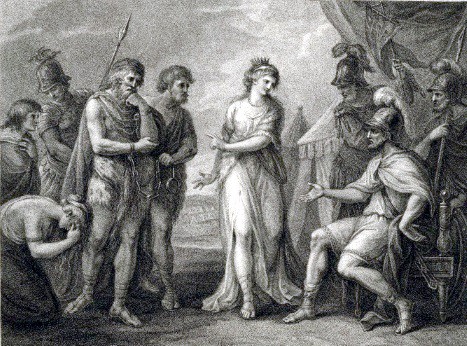
Caratacus meanwhile was forced to flee. Fearing for his life he fled north to the area known as the Brigantia. The Celtic tribe called the Brigantes were based in the north of England in modern-day Yorkshire and held vast territorial areas. Caratacus made his way there, hoping in vain for sanctuary. The Brigantian queen however had other ideas. Queen Cartimandua was loyal to the Romans who rewarded her loyalty with wealth and support. Instead of keeping Caratacus safe, she proceeded to hand him over to the Romans in chains, an action that would win her great favour amongst her Roman counterparts but would see her ostracised by her own people.
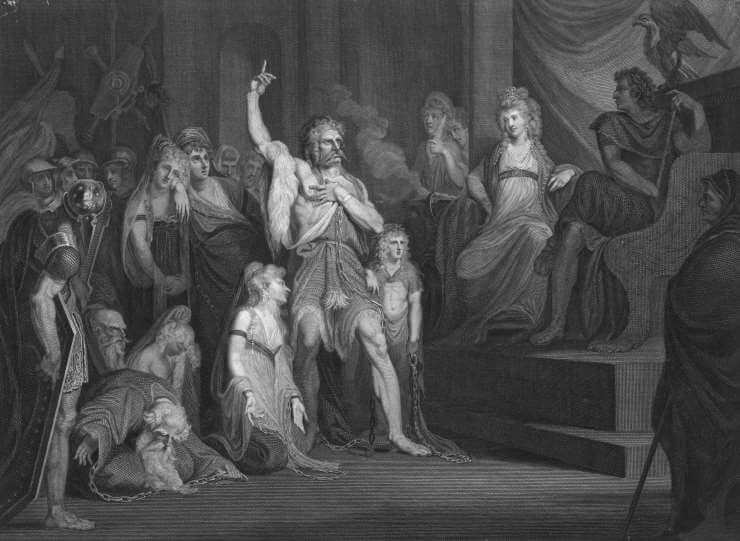
Now a Roman captive, Caratacus was subsequently paraded on the streets of Rome, exhibited as part of the Emperor Claudius’s triumph, a spectacle of Roman victory over Britain’s ancient tribes. Caratacus’s fate was not sealed however; in an impassioned speech he gave in the presence of the great emperor himself, he was able to win favour for himself and his family who were pardoned by Claudius. His defiant speech allowed him to live in exile, permitted to live in Italy in peace for the rest of his life. A peaceful end to a defiant and persistent ruler of Britain’s ancient tribe.
Jessica Brain is a freelance writer specialising in history. Based in Kent and a lover of all things historical.
